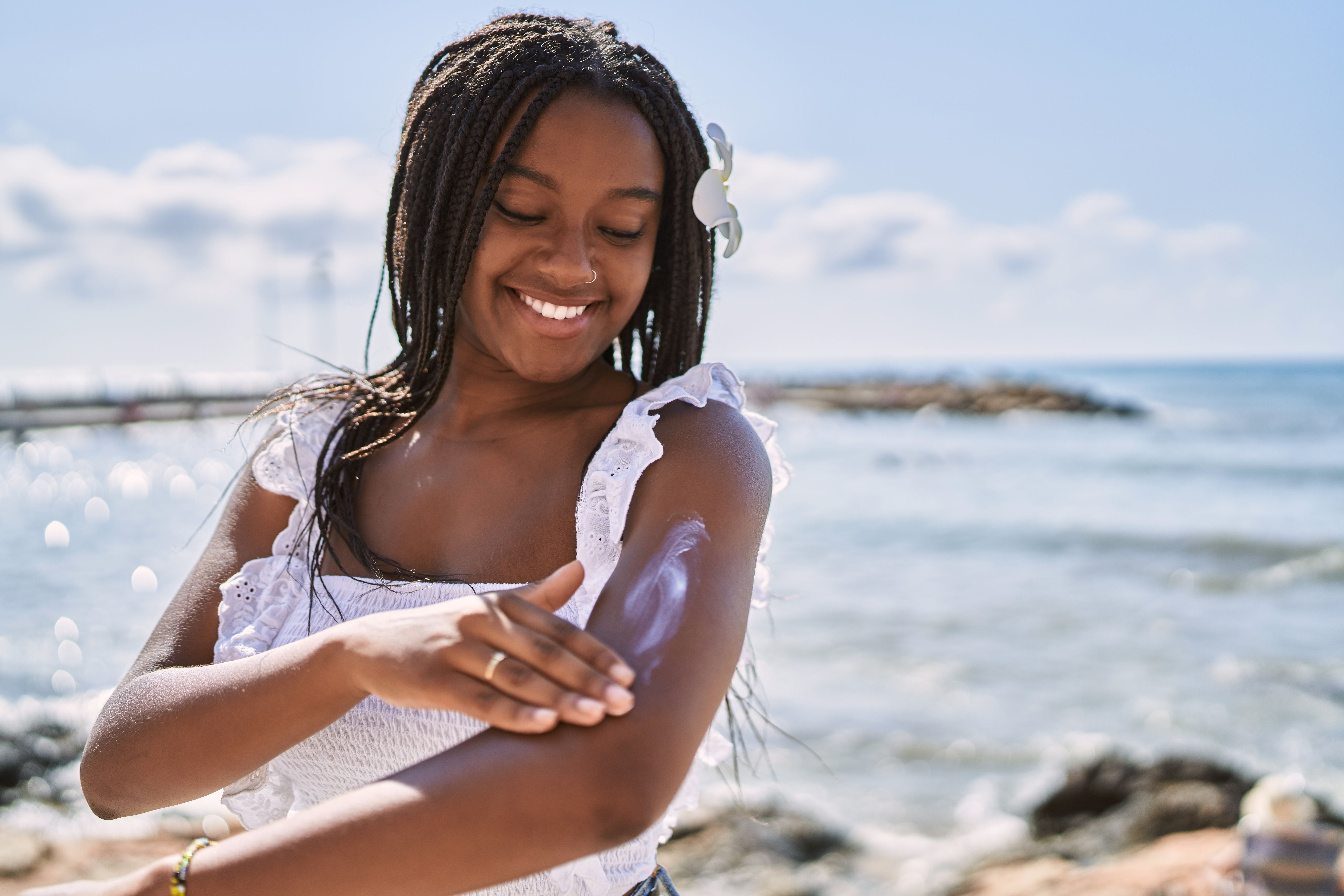- Case-Based Roundtable
- General Dermatology
- Eczema
- Chronic Hand Eczema
- Alopecia
- Aesthetics
- Vitiligo
- COVID-19
- Actinic Keratosis
- Precision Medicine and Biologics
- Rare Disease
- Wound Care
- Rosacea
- Psoriasis
- Psoriatic Arthritis
- Atopic Dermatitis
- Melasma
- NP and PA
- Skin Cancer
- Hidradenitis Suppurativa
- Drug Watch
- Pigmentary Disorders
- Acne
- Pediatric Dermatology
- Practice Management
- Prurigo Nodularis
- Buy-and-Bill
Article
Regions at Risk of Sunscreen Chemical Pollution Rely on Cautious SPF-Wearers
Author(s):
Coastal regions require environmentally-protective sun protection measures and best practices.
In the May cover story of Dermatology Times®, a panel of 4 leading clinicians met to discuss sun protection best practices, including considerations such as location, offering recommendations for sunscreen formulas based on regions of patient travel. In some coastal regions like Hawaii, clinicians noted that sunscreens containing octinoxate and oxybenzone are banned from commercial sale due to their impact on environmental elements such as coral reefs.
Krakenimages.com/AdobeStock

In a recent study,1 researchers sought to conduct an audience segmentation related to sun protection behaviors, particularly among travelers, tourists, and beachgoers, in order to examine behavioral determinants and indicators across several demographic groups. They cited research correlating communication campaign designs and behavior change pathways, particularly when communication campaigns are designed with the needs of different audiences and groups in mind.
Due to ecological, cultural, and policy-specific guidelines, researchers examined populations in 2 study locations: the Cape Lookout National Seashore in Outer Banks, North Carolina, and Kaloko-Honokōhau National Historical Park in Kailua-Kona, Hawaii. These locations were selected due to their varying environmental assets; Kaloko-Honokōhau National Historical Park protects natural and environmental resources and resides in a state that has banned certain sunscreen ingredients, and Cape Lookout National Seashoreresides in a state lacking coral reefs or sunscreen chemical pollution policies.
Using visitor intercept survey data, researchers established a set of 4 guiding research questions:
- Which audiences are of most concern for sunscreen chemical pollution?
- Which of the tested indicator variables differentiate audiences of concern?
- Are there differences in audiences of concern between North Carolina and Hawaii, areas with distinct cultural differences and sunscreen chemical regulatory status?
- Do the audiences relate to differing levels of issue awareness, risk perception, and pro-environmental behavioral intent?
With these questions in mind, researchers recruited study participants who were 18 years of age or older and visitors to either of the study sites. 683 surveys were completed at Cape Lookout, and 613 surveys were completed at Kaloko-Honokōhau.
Using reasons for visitation, including motivation, beach visitation, park recreation, and other variables such as usual sun protection and park sun protection, researchers evaluated visitors’ motivations for their tourism, visit to the park, and use of sun protection. Researchers also evaluated several other factors, including visitors’ level of issue awareness, risk perception, park behavioral intent, and their behavioral intent when visiting other beach locations.
From the survey results, researchers segmented the audience into numerous populations: multimodal sun protection tourists, sunscreen protection tourists, in-state frequent park visitors, and frequent beachgoers who skip sunscreen.
At Cape Lookout, 43% of visitors were classified as multimodal sun protection tourists, 29% as sunscreen protection tourists, 20% as in-state frequent park visitors, and 8% as frequent beachgoers who skip sunscreen. 3 of the 4 groups, excluding sunscreen protection tourists, were more likely to report an awareness of sunscreen formulas banned in certain regions for containing chemicals. In-state frequent park visitors were also more likely to view sunscreen chemicals as having a lower environmental risk than sunscreen protection tourists.
At Kaloko-Honokōhau, 44% of visitors were identified as multimodal sun protection tourists, 25% as sunscreen protection tourists, 19% as in-state frequent park visitors, and 12% as beachgoers who skip sunscreen. Frequent beachgoers who skip sunscreen and in-state frequent park visitors were more likely to have an awareness of sunscreen chemical pollution policies, with no significant differences reported between any of the 4 overall groups with regard to risk perception.
Between visitors of both parks, the same 2 audiences indicated their likelihood of wearing sun protective clothing at their next visit to the park: multimodal sun protection tourists and in-state frequent park visitors.
“Sunscreen protection tourists represent only approximately a quarter of visitors, yet they rely on sunscreen as their primary form of sun protection and have just a 28% probability of saying they use mineral-based sunscreen in Cape Lookout and 44% in Kaloko-Honokōhau,” study authors wrote. “These visitors also have lower levels of issue awareness and intent to engage in wearing sun-protective clothing than other audiences.”
Researchers noted this study was the first to conduct audience segmentation for sunscreen chemical pollution and sun protection, to their knowledge.
“The study's findings also speak to the need for improved health risk communication. The finding that a small proportion of visitors do not use any sun protection, or very little, even while in areas of high UV exposure suggests the level of continuing difficulty in engaging the public in behaviors to reduce skin cancer risks,” study authors wrote. “Frequent beachgoers who skip sunscreen are characterized by some of the higher proportions of people of color among the segments. This indicates the need for tailored interventions that address perceptions of being at low risk for skin cancer among these populations."
Reference
- Akerlof KL, Loevenich J, Melena S, Lipsky CA. Behaviorally segmented audiences for managing sunscreen chemical pollution risk in protected coastal natural resource areas. Risk Anal. Published online May 15, 2023. doi:10.1111/risa.14152





